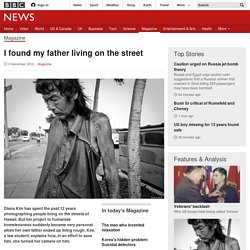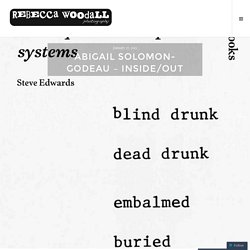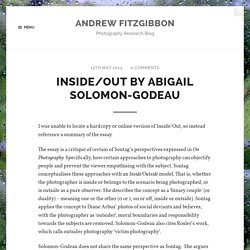

I found my father living on the street. Image copyright Diana Kim Diana Kim has spent the past 12 years photographing people living on the streets of Hawaii.

But her project to humanise homelessness suddenly became very personal when her own father ended up living rough. Kim, a law student, explains how, in an effort to save him, she turned her camera on him. My father introduced me to photography. He was a landscape photographer and I remember my early years sitting in his studio, helping him by cracking open disposable cameras and watching him make prints.
I don't have many photographs of my childhood because, over time, they've been lost but I can look back at the few I have and I can feel or smell it all over again - it's very vivid. I didn't really have the best memories of my father - he had pretty much left my mother and me by the time I was eight years old. When I went to the University of Hawaii in 2003, I did my first photo essay on homelessness.
Find out more It all happened really quickly. It was a miracle. Referencing and bibliographies. How to write a 3,000 word essay in a day - Save the Student. There’s nothing like an approaching deadline to give you the motivation you need!

No need to stress though, we’ve got some top tips that’ll help you out. You may start out with good intentions the day an essay is set, but at some point during your time at university you’re bound to find you’ve left everything to the last-minute and have fewer hours than Jack Bauer to complete a 3,000 word essay. And you have to do it well. We aren’t suggesting that you do leave it to the last day but, if you happen to, for whatever reason, you’re going to need this fool-proof guide. Challenge accepted. Between nights out, procrastination and other deadlines, the days can easily creep by. The worst thing you can do in this situation is panic, so keep calm and read on to find out how to nail that essay in unbelievable time.
Best-selling author Neil Strauss (wrote The Game) once decided to see if he could write and design a whole book in a single day. Preparation Plan Pick your work station Shut out the world. Resources for Writers: Synthesis Writing. Although at its most basic level a synthesis involves combining two or more summaries, synthesis writing is more difficult than it might at first appear because this combining must be done in a meaningful way and the final essay must generally be thesis-driven.

In composition courses, “synthesis” commonly refers to writing about printed texts, drawing together particular themes or traits that you observe in those texts and organizing the material from each text according to those themes or traits. Sometimes you may be asked to synthesize your own ideas, theory, or research with those of the texts you have been assigned. In your other college classes you'll probably find yourself synthesizing information from graphs and tables, pieces of music, and art works as well.
The key to any kind of synthesis is the same. Ap05 englang synthesi 46827. Abigail Solomon-Godeau – Inside/Out. Abigail Solomon-Godeau was identified as an important aspect to research for my symposium, however I was struggling to find the particular essay ‘Inside/Out’ anywhere online or in a library.

Anthony then suggested I look at the book Basic Critical Theory for Photographers by Ashley la Grange, who has analysed this essay and posed some interesting questions. The following text is the important parts I picked out which were relevant and could be included in my paper. Solomon-Godeau considers Susan Sontag’s ‘On Photography’ to be a perceptive critique of Diane Arbus’ work; in reference to colonisation and how this concept has impacted on photography. Solomon-Godeau proposes an idea relating to the approach a photographer takes in order to represent a subject, to be ‘Inside’ or ‘Outside’. Diane Arbus represents the outsider approach, the ‘objective’ nature however results in a voyeuristic, tourist-like, imperialistic representation. Evaluation: Initial notes were made from the PDF online – Inside/Out by Abigail Solomon-Godeau – Andrew Fitzgibbon. I was unable to locate a hardcopy or online version of Inside/Out, so instead reference a summary of the essay.

The essay is a critique of certain of Sontag’s perspectives expressed in On Photography. Specifically, how certain approaches to photography can objectify people and prevent the viewer empathising with the subject. Sontag conceptualises these approaches with an Inside/Outside model. That is, whether the photographer is inside or belongs to the scenario being photographed, or is outside as a pure observer. She describes the concept as a ‘binary couple’ (or duality) – meaning one or the other (0 or 1, on or off, inside or outside).
Solomon-Godeau does not share the same perspective as Sontag. After exploring the concept further through application to the work exhibited in Public Information: Desire, Disaster, Document, Solomon-Godeau reaches her conclusion.